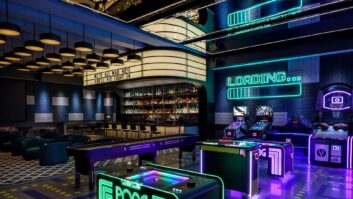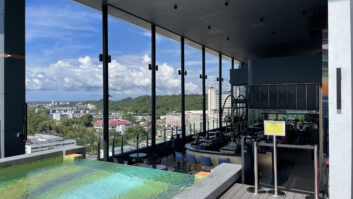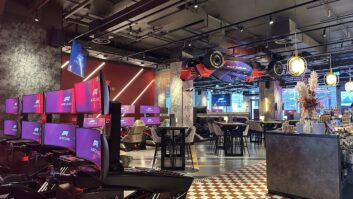
The sharp end of the installation business is an environment that, for a loudspeaker manufacturer, has changed beyond all recognition in the last 25 years. There was a time when an installer sourced speakers from one company, amps from another and a network was a 20m coil of cable! These days, with the advent of the ‘total solution’, loudspeaker companies have had to master every possible aspect of the project.
Initial designs, which once upon a time fitted onto the back of a cigarette packet, are now generated after hours working on a 3D representation of what is quite often a very complex venue – not to mention the vagaries of the audio network, which demand more time, expertise and software. Once upon a time the computer, networks and suites of design software were the sole territory of the lampies. In the 21st century audio business, especially when it comes to larger sports stadiums, we’ve had to become adept in the black arts of reverberation times, speech Intelligibility and ‘value’ engineering…
We’ve also had to become experts in the entire rigging process, power management and structural engineering. These were all once the province of the installer (now an integrator!) but, more and more, we see the responsibility fall to the speaker manufacturer to sign off the documents and designs needed to finish a project.
All this has led, in my opinion, to an influx into our industry of companies carrying out installation projects that have neither the background in, nor the love for, the audio side of our business. This can lead to sterile projects that lack any imagination and are more about the ‘safe’ option, because that’s how the last bloke did it and nobody complained.
In short, most larger projects from sports stadiums through to festivals and concerts could not these days go ahead without the full working support of the speaker companies, and those companies are having to put boots on the ground in order to achieve the right result.
There is an upside. Speaker system designs have got better as the higher-end loudspeaker suppliers have created proprietary design software that will allow for the best possible outcome to be achieved, even before the building is up. This is something the larger companies have had to invest in as we are now on site from day one, and we will be the ones held accountable.
Here’s a prime example from a couple of years ago: I, along with an installer (oops, sorry, integrator) was called back to a venue that we had quoted on some six months before. We had, at the time, produced a computer prediction of the proposed system. We sat in front of a committee which proceeded to savage us about how bad our design had been, arguing that they had only bought the system based on those results. Slightly taken aback, we pointed out that we had not supplied any equipment. We were then told that they had bought a much cheaper system, based on their belief that all speakers are the same, and that the Chinese units they had purchased were mounted in exactly the positions we had specified. All were surprised that the system did not perform the way we had said it would…
Then there was a 40,000-capacity football stadium project that I was involved with a few years ago. Along with an installer (there I go again, sorry, integrator) I had tendered for the project and had proposed a budget in the region of £300,000 to achieve the results they wanted. We lost a chunk of the tender but did maintain the order for networking and amplifiers. The system was signed off by the consultant but, on the first game of the season, I received a call from the club asking me to attend a board meeting at half time with the directors. On arrival, I was asked why the system they had paid for did not deliver the ‘concert sound’ quality I had put in the original tender. I had to point out that they had in fact not gone with our design and had instead purchased speakers that were only 20% of the cost of the ones we had suggested.
As the premier loudspeaker and electronics manufacturers, like Nexo, raise their game with more comprehensive installation service and support, I’d like to see myths like “all speakers do the same job” debunked for the good of lasting customer satisfaction.
[NEXO would like to point out that no installers or integrators have been harmed during the making of this article]
Gareth Collyer is UK sales manager of Nexo







